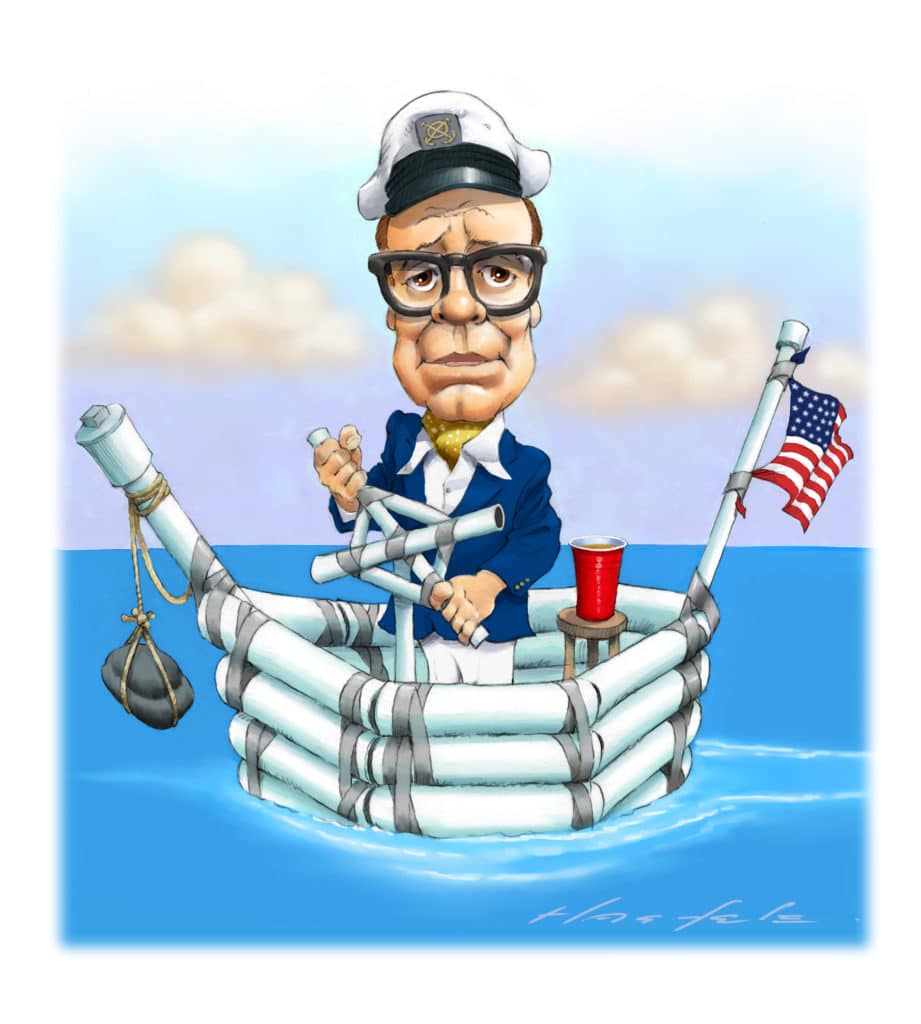
I’ve been warning my boatbuilding brothers, but it may be too late. Serious boat nuts are a cheap lot, and with new-boat prices on the rise, they might take matters into their own hands. I’ve been hearing the warning signs for the past few years: “I could buy a Ferrari for the price of that center-console. Hell, even cheap boats aren’t cheap anymore.” What’s next? Duct tape? Read on!
This past week, my pal Tom called still stuttering with anger after he took his 30-year-old cruiser in for service. “Do you know what the marine technician said to me? He said, ‘Sorry, pal, even if I knew how to fix this relic I can’t get the parts. You might try the junkyard.’ I believe the heathen was actually suggesting that I take my boat to the dump!” Tom could afford a new boat, but he’s a man of principle (cheap). He purchased his current “relic” new for $100,000, and to replace her in today’s boating bucks could top half a million. “Euro this and Euro that … those POS … they just don’t build ’em like they used to,” he insisted.
Another pal, Bob, has always been a cost-conscious buyer (cheap). He just took delivery of a new 50-footer, and I’d been expecting his call. In boating’s boom times, she’d have been the sort of sled he could’ve bought off the lot for a song, but these days it’s build to order. I knew that, this time around, the sticker on Bob’s new boat was over a million bucks — and he’d be cranky. “How is she?” I asked pensively. “It’s a POS just like the last one, but my wife loves it,” he grumbled. “I have no idea where they spent all the money.”
My boatbuilder brethren chastise me for being sympathetic to such whining. “Are you blind, Coyle? How much do you pay to fill up that Range Rover of yours? You do know the P (plastic) in FRP is a petroleum product. Don’t blame us. You’re the tree-hugger. We can’t flush the crapper at the plant without filling out a form for the Environmental Protection Agency.” Of course, in the long tradition of retail sales, any shortage of customers is either the manufacturer’s fault for building the wrong product or the dealer’s fault for not stocking it. But they still insist: “Coyle, you’re in the business. You should know that unit volume affects production efficiencies, which affect price. … ” Blah, blah, blah.
Recently, a buddy in boat sales called me out, saying, “Coyle, you and your cheap, chiseling pals are just not new-boat buyers. You guys should stick to the brokerage market! We can’t waste time trying to sell new boats to aging, serial boaters. Fresh blood, new markets, that’s the future.” Russia, South America, China and pretty much the whole Pacific Rim are on the target list. In fact, I’m quite sure that boatbuilders are counting on life on other planets and enough water to float a decent-size express cruiser.
Perhaps my pals should pick through leftovers on the discount table, but they’re sore. After all, they did fuel the fires for 30 years of the boating industry’s greatest boom, and it seems they’ve been left behind holding the bag … or the duct tape. According to news reports, a fellow from Maryland, no doubt a serial boat nut desperate for a new ride, took matters into his own hands and built a boat with a pile of PVC pipe and 800 feet of duct tape. The cost? Four hundred bucks.
After careful study, my analysis suggests that this 15-foot prototype cost just $27 per foot. If this technology were applied in the construction of new boats for my pals, they could be out on the water for less than $1,400 apiece. While their rides would certainly be POS, I am willing to bet they would be satisfied. They’d have gotten exactly what they paid for!









